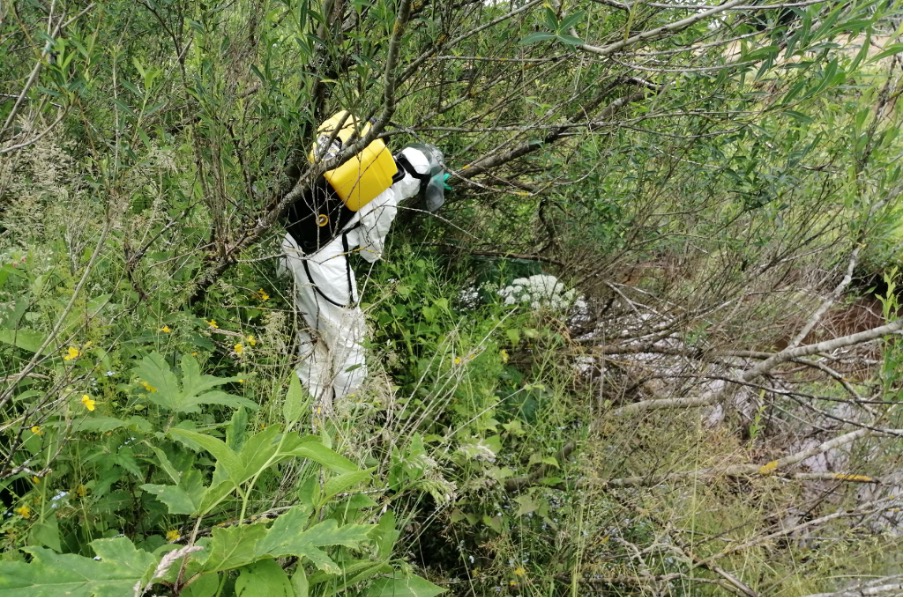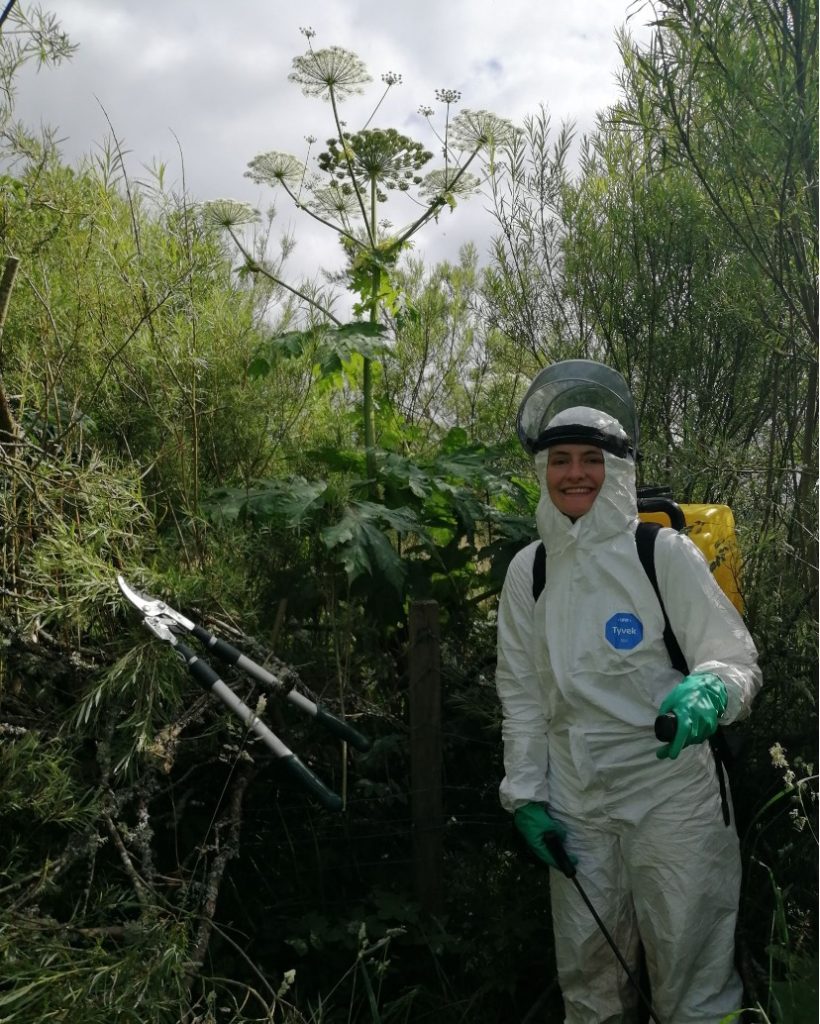

Over the last couple of months much of my work with Loch Lomond Fisheries Trust has focused on treating giant hogweed around the Loch Lomond catchment, particularly the River Blane and Endrick, which seem to be particularly badly affected. It is no easy feat.
Giant hogweed seems to like to grow in the most hard to reach locations; in dense tree stands, on precarious river banks, on islands in the middle of a river, just anywhere relatively inaccessible. I think it may be that, because these plants are so hard to reach and often difficult to spot, they are often missed in previous years treatments, and therefore can be mature plants that are ready to flower.
The plants that are flowering, or about to flower, are the highest priority to treat, so as to prevent them going to seed.

Treating the plant feels like an all day bootcamp session, and is certainly not a glamorous ordeal. I do rather enjoy getting to the more hard to reach plants, and I think my small size helps with this; I can squeeze through small spaces and get underneath the low lying tree branches with relative ease compared to my taller colleagues.
I tend to use my face shield as a battering ram against tree branches and other vegetation (although definitely not against the hogweed itself). Additionally, it is much more pleasant working in the shade under the trees than in the sun, as with all the PPE it can get pretty toasty.

Whenever spraying is not an option (usually due to rain), we use loopers to remove giant hogweed flower heads, as this at least prevents the flower going to seed in the next few weeks, and buys us a bit of time while waiting for a weather window in which we can spray the plant.
While the work is hard going, it does feel rewarding knowing that every plant you spray is one less giant hogweed plant in the world. However, I must say I am rather glad we have completed most of the spraying work for this year, and can move onto the next invasive species taking over our river banks, Himilayan Balsam.